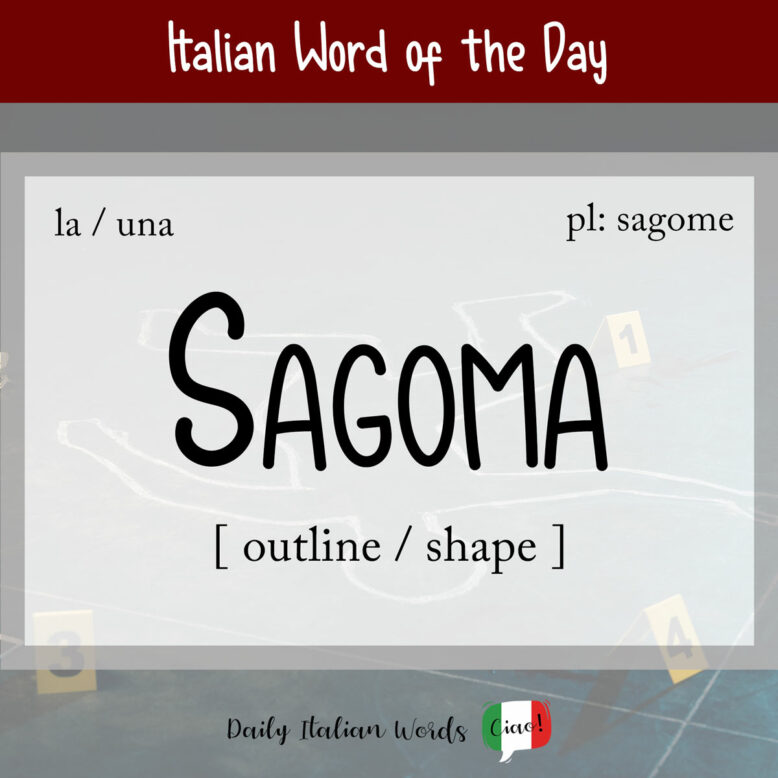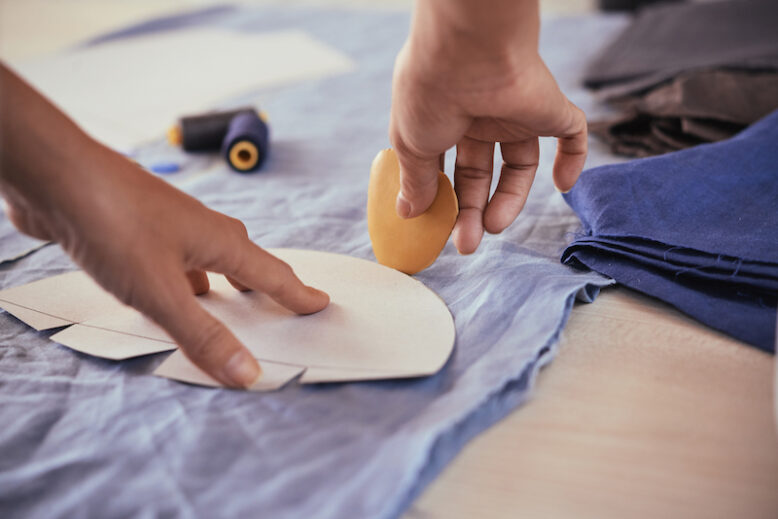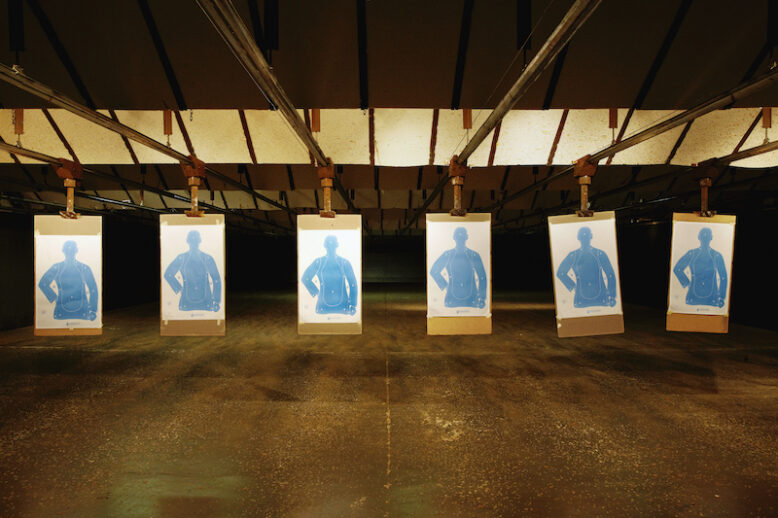The word sagoma in Italian refers to the profile or shape of an object that has aesthetic or functional importance such as, for example, the architecture of a building, a car or a piece of furniture. Some possible translations include outline, silhouette, contour and profile. It entered the language from the Greek ‘sakoma’ (meaning ‘counterweight’) via the Latin ‘sacoma’.

Sagoma is a feminine noun. The plural is sagome.
la sagoma
una sagoma
le sagome
delle sagome
Riesco a vedere la sagoma di una nave in lontananza.
I can see the outline of a ship off in the distance.
La leggera curvatura dello schienale addolcisce la sagoma della sedia.
The slight curvature of the back softens the shape of the chair.

Sagoma is also used to describe a shape, fashioned from paper, wood, cardboard, fabric or any other rigid material, that is the faithful reproduction of the outline of something, and serves as a model for others to copy. In this case, the best translation would be template, mould, cut-out or pattern.
Hanno messo una sagoma di cartone di Babbo Natale all’entrata del centro commerciale.
They put a cardboard cutout of Santa Claus at the mall entrance.
La forma di ogni pezzo è definita imbastendo la stoffa su una sagoma di carta.
The shape of each piece is defined by tacking the fabric to a paper template.

You can also use the word to refer to a wooden or cardboard figure, usually a person or an animal, used as a target in shooting practice.
L’agente ha mirato con precisione, colpendo la sagoma al centro.
The agent aimed with precision, hitting the target at the centre.

Finally, sagoma can be used in a joking manner to refer to a particularly unusual or amusing person – someone we might call a character or a card in English.
Tua figlia è davvero una sagoma. Mi fa sempre ridere con le sue barzellette!
Your daughter is a real card. She always makes me laugh with her jokes!
Heather Broster is a graduate with honours in linguistics from the University of Western Ontario. She is an aspiring polyglot, proficient in English and Italian, as well as Japanese, Welsh, and French to varying degrees of fluency. Originally from Toronto, Heather has resided in various countries, notably Italy for a period of six years. Her primary focus lies in the fields of language acquisition, education, and bilingual instruction.


